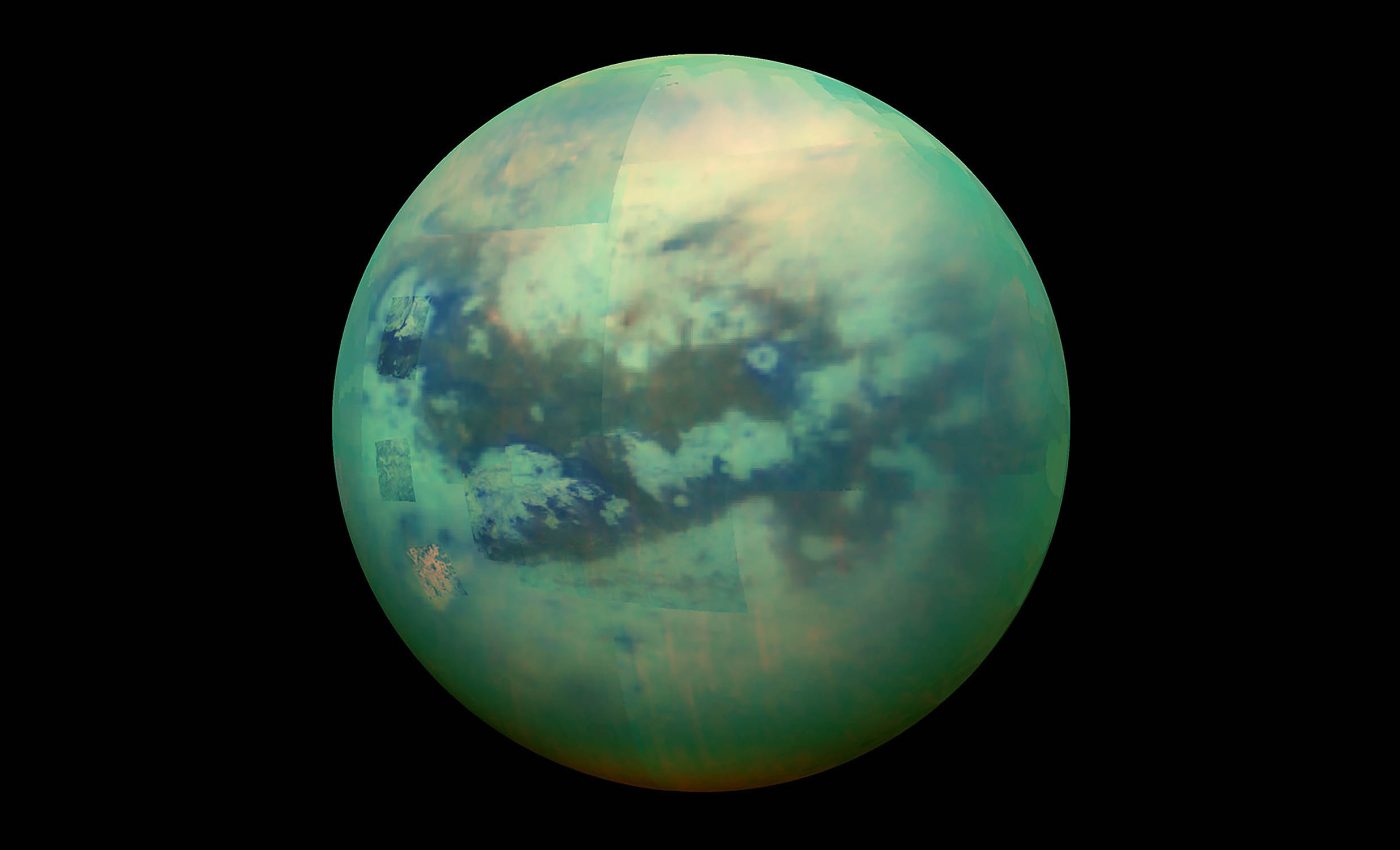
Why does Saturn's moon, Titan, have rivers but not deltas? Scientists have an idea
River deltas hold a record of climate history. On Earth, coastlines mark where land and sea constantly interact. Here, rivers meet oceans. Materials from land gather in deltas. These areas store vital clues about tectonics, climate, and planetary evolution.
Scientists apply that same logic to Titan, Saturn’s largest moon. Titan has active rivers and vast seas, but its coastlines don’t behave like those on Earth.
Titan has rivers with no deltas
Titan is the only body in the solar system, besides Earth, known to have stable liquid on its surface.
Titan has clouds, rain, rivers, lakes, and seas. But the liquid is not water. It is replaced by methane and ethane, which remain liquid under Titan’s frigid atmospheric conditions. These features make it a rare and valuable analog to Earth.
If coastlines on Earth can store records of climate and tectonic change, then Titan’s might hold the same promise – offering a chance to study an alien hydrological system that’s still active today.
Yet there’s a mystery at Titan’s shores. Even though Titan has broad rivers and large lakes, river deltas appear to be almost entirely missing. This caught the attention of Sam Birch, an assistant professor at Brown University.
“It’s kind of disappointing as a geomorphologist because deltas should preserve so much of Titan’s history,” Birch said.
Are deltas just hidden from view?
Back in 2006, NASA’s Cassini spacecraft gave scientists their first clear view of Titan’s surface. Its Synthetic Aperture Radar (SAR) pierced Titan’s thick, hazy atmosphere and revealed flowing channels and dark, flat seas.
But even at the mouths of Titan’s largest rivers, Cassini’s radar showed no clear signs of deltas. Scientists wondered – were these deltas hidden or missing altogether?
To answer that question, Birch and his team created a model. They simulated what Earth’s coastlines would look like through Titan’s radar conditions. In their model, Earth’s water was swapped for methane, mimicking Titan’s fluids, which absorb and reflect radar differently.
The idea was simple: if Earth’s large deltas remain visible in these synthetic SAR images, then Cassini should have seen Titan’s deltas – if they existed.
“We basically made synthetic SAR images of Earth that assume properties of Titan’s liquid instead of Earth’s,” Birch explained.
Cassini should detect Titan’s deltas
The model worked. Earth’s major coastal features – like the Mississippi River delta and barrier islands along the Gulf Coast – remained visible in the altered radar images.
This proved that Cassini should have been capable of detecting large deltas on Titan. With this in mind, the researchers returned to Titan’s SAR data and re-examined its coastlines.
“If there are deltas the size of the one at the mouth of the Mississippi River, we should be able to see it,” Birch said.

But after carefully reviewing the data, they found that deltas were indeed rare. Aside from two likely deltas near the south pole, most large rivers on Titan showed no signs of delta formation.
Only about 1.3% of the moon’s coastal rivers ended in deltas. By comparison, nearly every major river on Earth forms a delta at its mouth.
Shifting seas may erase Titan’s river deltas
On Earth, coastlines are dynamic boundaries. Materials eroded from mountains travel down rivers and settle into sedimentary structures.
These interactions produce a range of landforms that help scientists trace environmental evolution. Coastal areas are also shaped by tides, storms, and long-term sea-level changes.
Titan, with its unique climate system, is no exception. It too hosts coastlines where energy and materials interact – just with different ingredients and under different rules.
But Titan’s liquids are transparent to microwave radiation. This means Cassini’s radar can’t always distinguish where the coastline ends and where the sea floor begins.
While that poses challenges, the team’s modeling showed that large features are still detectable – provided there is enough contrast between land and submerged surfaces.
The findings confirmed what many had suspected: Titan truly lacks deltas, and it’s not because of poor visibility. Something else is preventing these sediment-rich features from forming or surviving.
Hidden clues beneath Titan’s seas
The new radar analysis also uncovered something unexpected. On Titan’s sea floors, the team found submerged river channels and deep pits of unknown origin.
These features suggest that sea levels may rise and fall frequently, eroding or dispersing any deltas before they have time to build up.
The researchers also suspect that winds and underwater flows might redistribute sediment, flattening coastlines before deltas can grow.
These discoveries hint at a much more dynamic Titan than previously assumed. Active coastal processes – shaped by tides, climate shifts, and even currents beneath the seas – may constantly reshape the landscape.
“It’s a playground for studying processes we thought we understood,” said Birch.
A dynamic alien coastline
The absence of deltas and presence of submerged features offer a new window into Titan’s climate and geological behavior. Birch and his colleagues have proposed several preliminary hypotheses.
Sea-level cycling, strong coastal winds, and sub-aqueous flows could all contribute to the vanishing deltas. But more data is needed to understand these interactions fully.
“This is really not what we expected,” Birch said. “But Titan does this to us a lot. I think that’s what makes it such an engaging place to study.”
The study also reinforces the value of improving future instruments. A better imaging system could reveal Titan’s river networks and coasts in greater detail, uncovering hidden patterns and explaining current mysteries.
Such improvements wouldn’t just benefit research on Titan. They could also refine how scientists observe Earth’s own changing coasts in the face of sea-level rise and erosion.
The study is published in the Journal of Geophysical Research Planets.
—–
Like what you read? Subscribe to our newsletter for engaging articles, exclusive content, and the latest updates.
Check us out on EarthSnap, a free app brought to you by Eric Ralls and Earth.com.
—–













